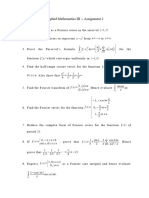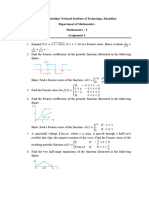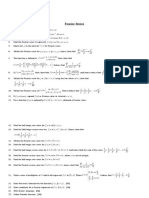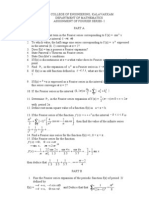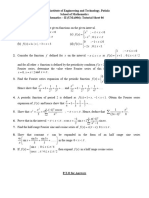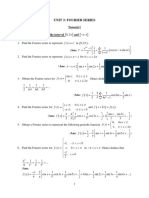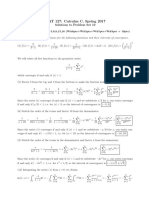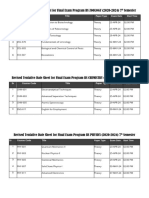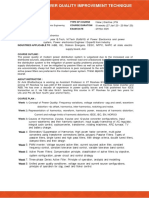0% found this document useful (0 votes)
34 views1 pageAssignment 2
This document contains 13 math problems involving power series representations and Fourier series expansions of functions. The problems cover determining intervals of convergence, representing common functions like logarithms using power series, evaluating infinite series, and expressing piecewise functions using Fourier series with applications to calculating integrals and sums.
Uploaded by
vtasawaCopyright
© © All Rights Reserved
We take content rights seriously. If you suspect this is your content, claim it here.
Available Formats
Download as PDF, TXT or read online on Scribd
0% found this document useful (0 votes)
34 views1 pageAssignment 2
This document contains 13 math problems involving power series representations and Fourier series expansions of functions. The problems cover determining intervals of convergence, representing common functions like logarithms using power series, evaluating infinite series, and expressing piecewise functions using Fourier series with applications to calculating integrals and sums.
Uploaded by
vtasawaCopyright
© © All Rights Reserved
We take content rights seriously. If you suspect this is your content, claim it here.
Available Formats
Download as PDF, TXT or read online on Scribd
/ 1





